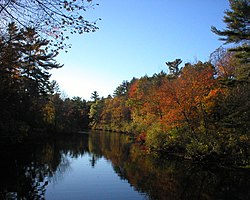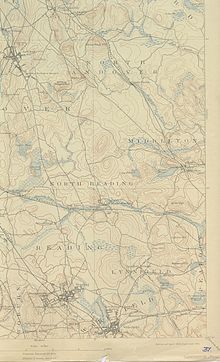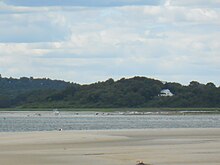
Essex County is a county in the northeastern part of the U.S. state of Massachusetts. At the 2020 census, the total population was 809,829, making it the third-most populous county in the state, and the seventy-eighth-most populous in the country. It is part of the Greater Boston area. The largest city in Essex County is Lynn. The county was named after the English county of Essex. It has two traditional county seats: Salem and Lawrence. Prior to the dissolution of the county government in 1999, Salem had jurisdiction over the Southern Essex District, and Lawrence had jurisdiction over the Northern Essex District, but currently these cities do not function as seats of government. However, the county and the districts remain as administrative regions recognized by various governmental agencies, which gathered vital statistics or disposed of judicial case loads under these geographic subdivisions, and are required to keep the records based on them. The county has been designated the Essex National Heritage Area by the National Park Service.

Middleton is a town in Essex County, Massachusetts, United States. The population was 9,779 at the 2020 census.

Newbury is a town in Essex County, Massachusetts, United States. The population was 6,716 at the 2020 census. Newbury includes the villages of Old Town, Plum Island and Byfield. Each village is a precinct with its own voting district, various town offices, and business center.

North Andover is a town in Essex County, Massachusetts, United States. At the 2020 census, the population was 30,915.

Boxford is a town in Essex County, Massachusetts, United States. According to the U.S. Census Bureau, the town's population was 8,203 in 2020.

Ipswich is a coastal town in Essex County, Massachusetts, United States. The population was 13,785 at the 2020 census. Home to Willowdale State Forest and Sandy Point State Reservation, Ipswich includes the southern part of Plum Island. A residential community with a vibrant tourism industry, the town is famous for its clams, celebrated annually at the Ipswich Chowderfest, and for Crane Beach, a barrier beach near the Crane estate. Ipswich was incorporated as a town in 1634.
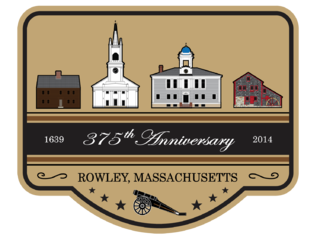
Rowley is a town in Essex County, Massachusetts, United States. The population was 6,161 at the 2020 census.
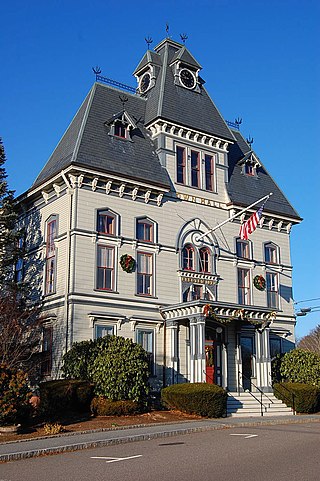
Topsfield is a town in Essex County, Massachusetts, United States. The population was 6,569 at the 2020 census. Topsfield is located in the North Shore region of Massachusetts. Part of the town comprises the census-designated place of Topsfield.
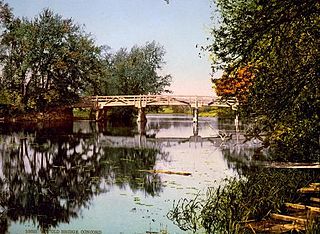
The Concord River is a 16.3-mile-long (26.2 km) tributary of the Merrimack River in eastern Massachusetts, United States. The river drains a small rural, suburban region northwest of Boston. As one of the most notable small rivers in U.S. history, it was the scene of an important early battle of the American Revolutionary War and was the subject of a 19th-century book by Henry David Thoreau.

Massachusetts's 6th congressional district is located in northeastern Massachusetts. It contains almost all of Essex County, including the North Shore and Cape Ann and excluding the Merrimack Valley, as well as some towns in Middlesex County.
The Massachusetts Highway Department was the highway department in the U.S. state of Massachusetts from 1991 until the formation of the Massachusetts Department of Transportation (MassDOT) in 2009.
The Jewish Journal is an independent, community-sponsored Jewish newspaper serving the Jewish community of Essex County, Massachusetts north of Boston, and published bi-weekly on Fridays since 1976.
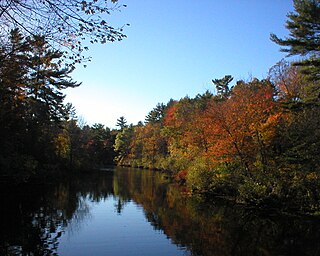
Bradley Palmer State Park is a public recreation area covering 736 acres (298 ha) on the Ipswich River in the towns of Hamilton and Topsfield, Massachusetts. The state park was once the estate of noted attorney Bradley Palmer. In addition to an extensive system of multi-use trails, the park features Palmer's restored Willowdale Mansion. The mansion is now home to Willowdale Estate, a premier event venue. Bordered on the north by the Ipswich River and Willowdale State Forest, the park is managed by the Department of Conservation and Recreation.

Wenham Lake is a 224-acre body of water located in Wenham and Beverly towns, Essex County, Massachusetts.The lake receives water from the water table, a system of streams, the Putnamville Reservoir, and the Ipswich River. In the 19th century, the lake was an important source of ice for export, especially to Britain. Wenham Lake is now a reservoir for the Salem and Beverly Water Supply Board.
Codorus Creek is a 42.4-mile-long (68.2 km) tributary of the Susquehanna River in York County, Pennsylvania, in the United States.
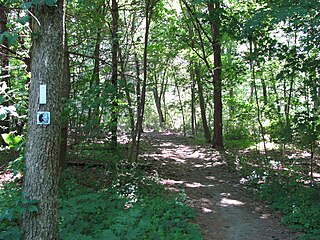
The Bay Circuit Trail and Greenway or Bay Circuit is a Massachusetts rail trail and greenway connecting the outlying suburbs of Boston from Plum Island in Newburyport to Kingston Bay in Duxbury, a distance of 200 miles (320 km).

The Agawam were an Algonquian Native American people inhabiting the coast of New England encountered by English colonists who arrived in the early 17th century. Decimated by pestilence shortly before the English colonization and fearing attacks from their hereditary enemies among the Abenaki and other tribes of present-day Maine, they invited the English to settle with them on their tribal territory.
Masconomet, spelled many different ways in colonial deeds, was sagamore of the Agawam tribe among the Algonquian peoples during the time of the English colonization of the Americas. He is known for his quitclaim deed ceding all the tribal land, which extended from Cape Ann to the Merrimack River, as far inland as North Andover, Massachusetts and Middleton, Massachusetts, and as far to the southwest as the Danvers River, to John Winthrop the Younger, his heirs and all the settlers of eastern Essex County for a sum of 20 pounds, about 100 dollars.

Samuel Phillips was an American Congregational minister and the first pastor of the South Church in Andover, Massachusetts. His son, John Phillips, was the founder of Phillips Exeter Academy, and his grandson, Samuel Phillips Jr., was the founder of Phillips Academy Andover and briefly the lieutenant governor of Massachusetts.
The 155th Massachusetts General Court, consisting of the Massachusetts Senate and the Massachusetts House of Representatives, met from January 1, 1947, to June 18, 1948, during the governorship of Robert F. Bradford, in Boston.
